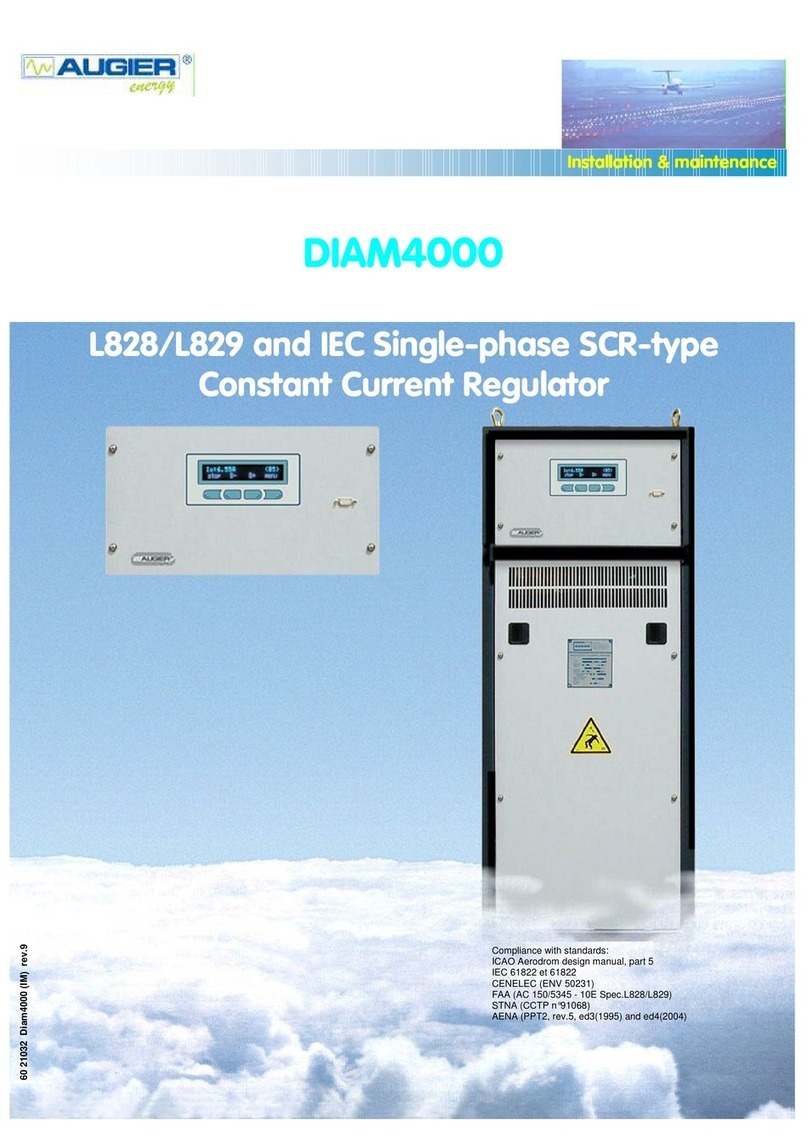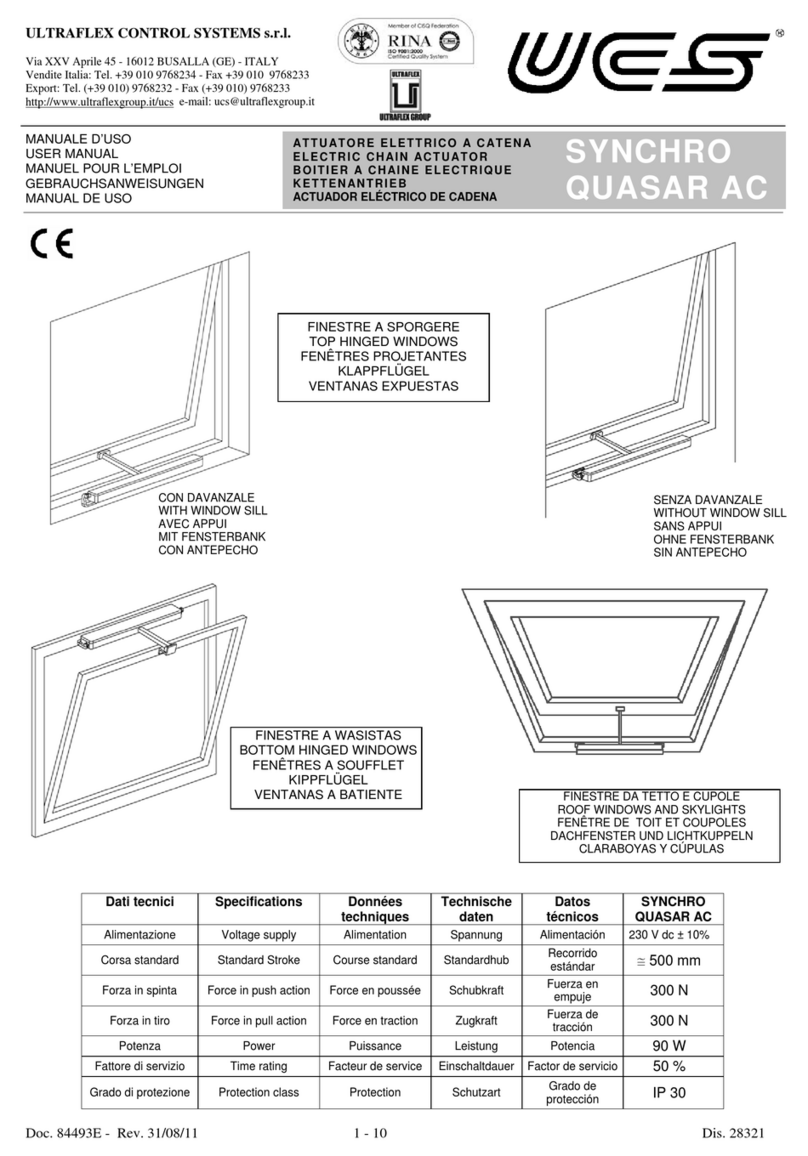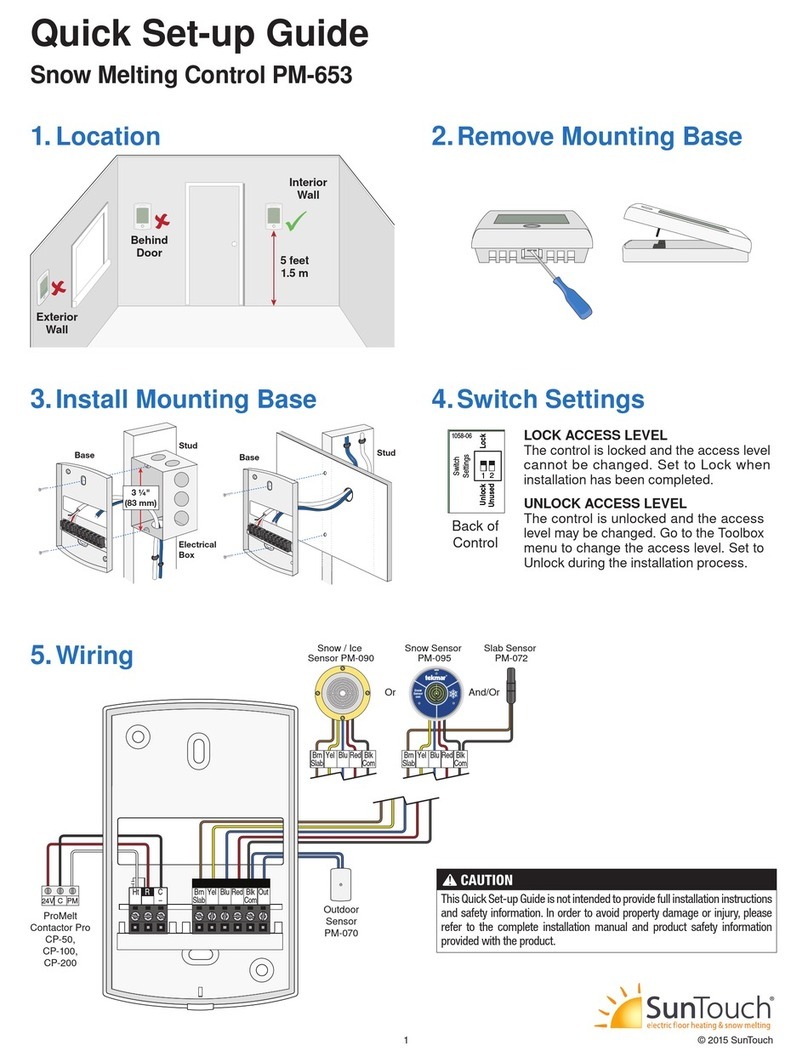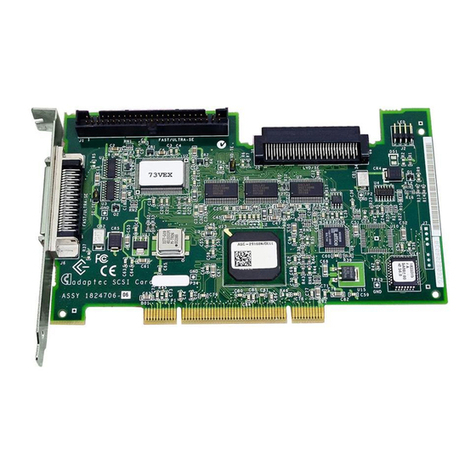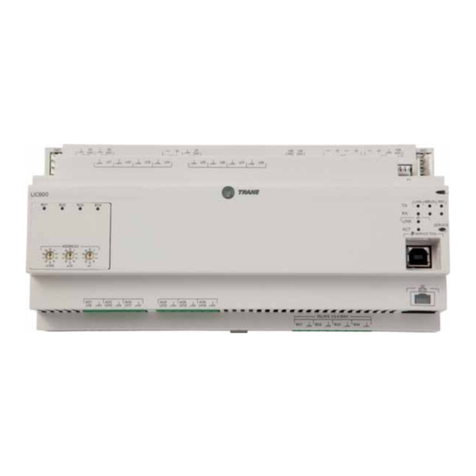AUGIER Energy OCEM DIAM4100 Maintenance and service guide

Energy Technology srl
Operating office :
Via della Solidarieta 2/1
40056 Valsamoggia –Loc. Crespellano (BO) –Italy
Ph : + 39 051 6656 611 Fax : +39 051 6656 677
VAT Nr : IT 031 4821 1208
a division of Energy Technology srl
DIAM 41OO
L828/L829 and IEC Single-phase SCR-type
Constant Current Regulator
Compliance with standards:
ICAO Aerodrom design manual, part 5
IEC 61822 et 61821
FAA (AC 150/5345-10F Spec.L828/L829)
AENA (PPT2 ed4(2004)
60 21282 Diam4100 (IM)
Installation & maintenance

DIAM4100 ©2017 AUGIER SA.
6021282 DIAM 4100 OCEM ENERGY TECH rev 1-25.doc
I-2

DIAM4100 ©2017 AUGIER SA.
6021282 DIAM 4100 OCEM ENERGY TECH rev 1-25.doc
I-3
RECORD OF CHANGES
Rev.
Pages
Description
From S/N
By
App.
Date
1.0
First issue
ED
RG
17/09/07
1.1
corrections
RG
RG
09/10/07
1.2
33, 56
LV and HV Intervention instruction and warning
RG
RG
22/10/07
1.3
Interface board &Jbus table
ED
RG
18/07/08
1.4
46,47,51
Jbus address 105 70, 9869
ED
RG
14/10/08
1.5
65, 68
Spare parts list modification
OE
RG
28/11/08
1.6
27,28
LFD measurement
ED
RG
18/12/08
1.7
37
SOURIAU remote control
ED
RG
23/12/08
1.8
21
Capacitive current detection
ED
RG
26/03/09
1.9
92
Ordering information
ED
RG
04/05/09
1.10
67, 68
Spare list (thyristor board)
ED
RG
22/06/09
1.11
26
Rotative cutout
ED
RG
03/10/09
1.12
29
33
Note on insulation measurement §I.8.3
Circuit breaker recommendation update §II.1.5.2
TVD
RG
29/03/11
1.13
27
Add external rotative cutout –page setup
TVD
RG
18/05/11
1.14
54
Remote priority, remote fail safe
ED
RG
26/05/11
1.15
27
Note lightning arrestor status using EFD
TVD
RG
13/09/11
1.16
40,41
AENA modifications
ED
RG
19/03/12
1.17
39
SOURIAU connections
ED
RG
28/03/12
1.18
32
Update low voltage protection table
TVD
RG
22/05/12
1.19
71, 72, 73
Update spare parts codes
TVD
RG
12/06/12
1.20
69, 70
Internal error codes description
TVD
ED
18/10/12
1.21
56
Remote control Ethernet + serial link
Remove Jbus table compatible 4000
ED
ED
30/06/15
1.22
Add reference in spare parts list
ED
ED
15/11/16
1.23
2
Warranty modification
RG
RG
15/05/17
1.24
50, 78
FAA terminal block
RG
RG
15/05/17
1.25
Maintenance CIMALT & New codification
>2018
RG
RG
20/02/18

DIAM4100 ©2017 AUGIER SA.
6021282 DIAM 4100 OCEM ENERGY TECH rev 1-25.doc
I-4

DIAM4100 ©2017 AUGIER SA.
6021282 DIAM 4100 OCEM ENERGY TECH rev 1-25.doc
I-5
WARRANTIES
Guarantee
AUGIER’s goods has been manufactured and will perform in accordance with applicable specifications, and
any defect in design, materials or workmanship which may occur during proper and normal use during a period
of 1 year from date of installation or 2 years from date of shipment will be corrected by repair or replacement by
the manufacturers f.o.b factory.
The guarantee covers repair, modification or replacement of parts or products recognised to be defective, in
the shortest possible time, at AUGIER’s cost, provided always that the goods have been properly handled and
stored prior installation, properly installed and properly operated after installation.
Unless otherwise specifically laid down in contract, the guarantee does not cover:
•Costs of consignment to factory and re-consignment of defective goods to Buyer
•Travelling & sojourn expenses of AUGIER’s personnel if goods have to be repaired on site; assembly
and dismantling of any goods other than those recognised to be defective; expenses incurred for
waiting times by AUGIER’s personnel on site for reasons independent of their will;
•Unjustified travel expenses.
Guarantee shall not apply in the following cases:
•Defects in materials supplied by Buyer or due to any designs imposed by them;
•Repairs or replacements due to normal wear and tear, or damages or accidents.
•Repairs or replacements due to damages or accidents resulting from negligence or lack of due care,
inadequate supervision or maintenance, or erroneous use of the equipment or software;
•Any other causes for which AUGIER shall not be held responsible, e.g. resulting from an case of Force
Majeure.
•When Buyer has replaced AUGIER’s parts with other parts.
Buyer must inform AUGIER in writing and without delay of any defects in goods, giving all necessary
information and detailed description of how equipment has been utilised, together with purchase date. Buyer
undertakes not to have repairs carried out by third parties; any repairs carried out without AUGIER’s express
prior agreement shall invalidate the guarantee.
It is expressly agreed between the two parties that Buyer cannot avail himself of the beneficial dispositions
contained in the guarantee without having first satisfied payment conditions laid down in contract
Disclaimers
This manual could contain technical or typographical errors. AUGIER reserves the right to make changes and
revise this manual from time to time without obligation to notify any person or organisation of such changes or
revision.
Values and measurements given in this manual are average values and are not binding. AUGIER disclaims any
liability for damages suffered as a result of reliance on the information given in this manual, or the use of
equipment or processes which this manual refers.
No guarantee is made that the use of the products, equipment, processes or information to which this manual
refers will not infringe any third party’s patent or rights. Information given does not release the buyer from
making their own tests.

DIAM4100 ©2017 AUGIER SA.
6021282 DIAM 4100 OCEM ENERGY TECH rev 1-25.doc
I-6
SAFETY
Safety precautions
This equipment is normally used or connected to circuits that may employ dangerous and lethal voltages.
Extreme caution should be exercised by operating or maintenance people when working on or with this
equipment.
See IEC 61820 & 61821 standard (CCR type IEC), or FAA AC150/5340-26 advisory circular (CCR type FAA),
concerning safety rules and precautions. While practical safety precautions have been incorporated in this
equipment, the following rules must be strictly observed :
•KEEP AWAY FROM LIVE CIRCUITS :
Operating and maintenance people must at all time observe all safety regulations. Do not change
components nor perform maintenance inside equipment with power ON or the lighting loop energised.
•RESUSCITATION :
Operating and maintenance personnel should familiarise and keep themselves trained with resuscitation
techniques found in widely published manuals about first aid instructions.
•ELECTROSTATIC DISCHARGE (ESD) :
Electronic sub-assemblies and boards should be touched only for unavoidable operation (replacement,
for example). Before to operate, maintenance people must first of all eliminate unwanted electronic
charges, discharging his own body while touching a conductive earthed object or part. Electronic boards
and components as power semiconductors must be stored and carried an conductive packing.
•DESTRUCTION :
In case of dismantling, scrapping or placing out of service, the user must follow all the required
precautions for component, materials or equipment elimination, according the local rules.
EEC DIRECTIVES
This equipment complies with the requirements of EC directives :
•89/336/EEC, 92/31/EEC and 93/68/EEC with regard of Electromagnetic
Compatibility
•73/23/EEC with regard of Low Voltage Equipment

DIAM4100 ©2017 AUGIER SA.
6021282 DIAM 4100 OCEM ENERGY TECH rev 1-25.doc
I-7
TABLE OF CONTENTS
RECORD OF CHANGE ……………………………………………………………………………………………… I-2
WARRANTIES …………………………………………………………………………………………………………… I-3
SAFETY ……………………………………………………………………………………………………………….….. I-4
TABLE OF CONTENTS ……………………………………………………………………………………………… I-5
IDESCRIPTION_______________________________________________________I-13
I.1 OVERVIEW ______________________________________________________________________ I-13
I.2 MECHANICAL DESCRIPTION_______________________________________________________ I-14
I.2.1 DESCRIPTION________________________________________________________________ I-14
I.2.2 GENERAL MECHANICAL FEATURES _____________________________________________ I-14
I.2.3 STORAGE CONDITIONS _______________________________________________________ I-15
I.2.4 DIMENSIONS_________________________________________________________________ I-15
I.3 ELECTRICAL DESCRIPTION _______________________________________________________ I-16
I.3.1 BLOCK DIAGRAMS____________________________________________________________ I-16
I.3.1.1 Overview: __________________________________________________________________ I-16
I.3.1.2 Electronics : ________________________________________________________________ I-16
I.3.2 GENERAL CIRCUIT DIAGRAMS _________________________________________________ I-16
I.3.3 GENERAL ELECTRICAL FEATURES______________________________________________ I-17
I.4 INSTRUCTIONS FOR USE__________________________________________________________ I-18
I.4.1 USER INTERFACE ____________________________________________________________ I-18
I.4.2 CONTROL ___________________________________________________________________ I-20
I.4.3 LOCAL INFORMATION FEEDBACK_______________________________________________ I-20
I.4.4 REMOTE INFORMATION FEEDBACK _____________________________________________ I-22
I.5 OPERATION _____________________________________________________________________ I-23
I.5.1 CONFIGURATION _____________________________________________________________ I-24
I.5.2 SETTING ____________________________________________________________________ I-24
I.5.2.1 Current range:_______________________________________________________________ I-24
I.5.3 PROTECTIONS _______________________________________________________________ I-24
I.5.3.1 LV power monitoring: _________________________________________________________ I-24
I.5.3.2 “Open circuit”: _______________________________________________________________ I-24
I.5.3.3 “Capacitive current detection”: __________________________________________________ I-24
I.5.3.4 “Overcurrent”: _______________________________________________________________ I-25
I.5.3.5 Cancelling “Open circuit” and “Overcurrent” faults: __________________________________ I-25
I.5.4 AUTOMATIC OPERATION:______________________________________________________ I-25
I.6 SUB-ASSEMBLIES________________________________________________________________ I-26
I.6.1 LOAD PLATE _________________________________________________________________ I-26
I.6.1.1 Adaptation to load: ___________________________________________________________ I-26
I.6.1.2 Automatic load plate position computation: ________________________________________ I-27
I.6.2 CUT OUT AND EARTHING PLATE (OPTION) _______________________________________ I-28

DIAM4100 ©2017 AUGIER SA.
6021282 DIAM 4100 OCEM ENERGY TECH rev 1-25.doc
I-8
I.6.2.1 Normal position :_____________________________________________________________ I-28
I.6.2.2 Safety position: ______________________________________________________________ I-28
I.6.2.3 Load measurements: _________________________________________________________ I-28
I.6.3 ROTATIVE CUTOUT AND EARTHING SWITCH (OPTION)_____________________________ I-29
I.6.3.1 Normal Position: _____________________________________________________________ I-29
I.6.3.2 Safety Position:______________________________________________________________ I-29
I.6.3.3 Load measurement: __________________________________________________________ I-29
I.6.3.4 Padlocking (Option) : _________________________________________________________ I-29
I.6.3.5 External rotative cutout version with padlock (Option) : _______________________________ I-30
I.7 ACCESSORIES___________________________________________________________________ I-30
I.7.1 “ALIZE4100” SOFTWARE _______________________________________________________ I-30
I.8 OPTIONS________________________________________________________________________ I-30
I.8.1 EARTH FAULT DETECTOR (EFD) ________________________________________________ I-30
I.8.2 OPTIONAL ISOLATING DEVICES ________________________________________________ I-31
I.8.2.1 Cut-out and earthing plate : See I.6.2_____________________________________________ I-31
I.8.2.2 FAA cut-out plug: ____________________________________________________________ I-31
I.8.3 OUTPUT LIGHTNING ARRESTORS_______________________________________________ I-31
I.8.4 INPUT LIGHTNING ARRESTORS_________________________________________________ I-31
I.8.5 CASTERS____________________________________________________________________ I-31
I.8.6 BURNT LAMPS DETECTION:____________________________________________________ I-31
I.8.7 OUTPUT POWER DROP DETECTION: ____________________________________________ I-32
I.8.8 TIME METERS: _______________________________________________________________ I-33
I.8.9 BUZZER _____________________________________________________________________ I-33
I.8.10 WIG WAG____________________________________________________________________ I-33
I.8.11 OTHER OPTIONS _____________________________________________________________ I-33
II INSTALLATION _____________________________________________________ II-34
II.1 PREPARATION___________________________________________________________________ II-34
II.1.1 EQUIPMENT RECEPTION ______________________________________________________ II-34
II.1.1.1 Equipment delivered:________________________________________________________ II-34
II.1.1.2 Checking the equipment:_____________________________________________________ II-34
II.1.2 DEVICE LOCATION____________________________________________________________ II-34
II.1.3 CHECKING THE INSTALLATION _________________________________________________ II-35
II.1.3.1 Single phase power supply: __________________________________________________ II-35
II.1.3.2 LV Protection: _____________________________________________________________ II-35
II.1.3.3 Lighting loop:______________________________________________________________ II-36
II.1.3.4 Management by remote control: _______________________________________________ II-36
II.2 CONNECTIONS __________________________________________________________________ II-37
II.2.1 POWER AND EARTH __________________________________________________________ II-37
II.2.1.1 LV supply: ________________________________________________________________ II-37
II.2.1.2 Earthing__________________________________________________________________ II-37
II.2.1.3 Lighting loop:______________________________________________________________ II-38
II.2.2 REMOTE CONTROL CONNECTIONS _____________________________________________ II-39
II.2.2.1 IEC Multiwire remote control (IEC type CCRs only): _______________________________ II-40

DIAM4100 ©2017 AUGIER SA.
6021282 DIAM 4100 OCEM ENERGY TECH rev 1-25.doc
I-9
II.2.2.1.1 Terminal block T1 (Inputs and brightness indication) _______________________________ II-40
II.2.2.1.2 Terminal block T2 (other outputs)______________________________________________ II-41
II.2.2.2 SOURIAU multiwire remote control with 20 to 60Vdc control supply ___________________ II-42
II.2.2.2.1 Control (20 to 60 Vdc only) : __________________________________________________ II-42
II.2.2.2.2 Monitoring (dry contacts): ____________________________________________________ II-42
II.2.2.3 AENA multiwire remote control with 20 to 60Vdc control supply ______________________ II-43
II.2.2.4 FAA Multiwire remote control with 20 to 60Vdc control supply________________________ II-45
II.2.2.5 FAA Multiwire remote control with EXTERNAL 20 to 60Vdc control supply______________ II-45
II.2.2.5.1 Inputs (20 to 60 Vdc only) :___________________________________________________ II-45
II.2.2.6 Example of FAA wiring : EXTERNAL 48Vdc______________________________________ II-46
II.2.2.7 FAA Multiwire remote control with INTERNAL 20 to 60Vdc control supply ______________ II-46
II.2.2.7.1 Inputs (contacts free of voltage only) : __________________________________________ II-46
II.2.2.8 Example of FAA wiring : INTERNAL 20 to 60Vdc__________________________________ II-47
II.2.2.9 FAA Multiwire remote control with 120Vac control supply ___________________________ II-48
II.2.2.10 FAA Multiwire remote control with EXTERNAL 120Vac control supply _________________ II-48
II.2.2.10.1 Inputs (120Vac only) : ______________________________________________________ II-48
II.2.2.11 Example of FAA wiring : EXTERNAL 120 Vac ____________________________________ II-49
II.2.2.12 FAA Multiwire remote control with INTERNAL 120Vac control supply__________________ II-50
II.2.2.12.1 Inputs (contacts free of voltage only) : _________________________________________ II-50
II.2.2.13 Example of FAA wiring : INTERNAL 120Vac _____________________________________ II-51
II.2.2.14 FAA Multiwire remote control outputs: __________________________________________ II-51
II.2.2.15 SPECIFIC TERMINAL BLOCK according FAA AC150/5345-10 : _____________________ II-53
II.2.2.16 Wiring remote control voltage configuration ______________________________________ II-54
II.2.2.17 Operating modes for multiwire (FAA & IEC) remote control __________________________ II-55
II.2.2.18 RS485/RS422 Serial Link (Option): ____________________________________________ II-56
II.2.2.19 Ethernet link (Option): _______________________________________________________ II-58
II.2.2.20 Ethernet link + serial link RS422/RS485 (Option) :_________________________________ II-59
II.2.2.21 Remote fail safe mode: ______________________________________________________ II-59
II.2.2.22 Remote priority:____________________________________________________________ II-60
II.2.2.23 Lonworks link (Option): ______________________________________________________ II-61
II.2.2.24 4-20mA outputs (Option)_____________________________________________________ II-61
II.2.3 4-20MA LOOP CURRENT : ______________________________________________________ II-61
II.2.3.1 4-20mA current loop for output current and power measurements : ___________________ II-62
II.2.3.2 4-20mA loop current (ground insulation):________________________________________ II-62
II.2.4 CIRCUIT SELECTOR: __________________________________________________________ II-63
II.3 ADJUSTING THE CCR_____________________________________________________________ II-64
II.3.1 ADAPTATION TO LOAD ________________________________________________________ II-64
II.3.1.1 Maximum output power available for each power settings: __________________________ II-64
II.3.2 PARAMETER MODIFICATION ___________________________________________________ II-64
II.3.2.1 Preferred configuration values: ________________________________________________ II-64
II.3.2.2 Brightness values:__________________________________________________________ II-65
II.3.2.3 Value of “Open Circuit” protection level: _________________________________________ II-65
II.3.2.4 Value of “Overcurrent” protection levels:_________________________________________ II-65
III COMMISSIONING__________________________________________________III-66
III.1 PROCEDURE ___________________________________________________________________ III-66
III.2 TESTS _________________________________________________________________________ III-67

DIAM4100 ©2017 AUGIER SA.
6021282 DIAM 4100 OCEM ENERGY TECH rev 1-25.doc
I-10
III.2.1 SHORT-CIRCUIT TESTS_______________________________________________________ III-67
III.2.2 OVERLOAD TESTS___________________________________________________________ III-67
III.2.3 OPEN-CIRCUIT TEST _________________________________________________________ III-67
IV MAINTENANCE __________________________________________________ IV-68
IV.1 FORMALISATION________________________________________________________________ IV-68
IV.2 PROCEDURE FOR INTERVENTION _________________________________________________ IV-68
IV.3 PREVENTIVE ___________________________________________________________________ IV-69
IV.3.1 FIRST MONTHS______________________________________________________________ IV-69
IV.3.2 ANNUAL PROCEDURE________________________________________________________ IV-69
IV.3.3 EVERY THREE YEARS________________________________________________________ IV-69
IV.4 CORRECTIVE ___________________________________________________________________ IV-70
IV.4.1 FAULT DIAGNOSIS ___________________________________________________________ IV-70
IV.4.1.1 LV power fault: ___________________________________________________________ IV-70
IV.4.1.2 “Open Circuit” fault: ________________________________________________________ IV-71
IV.4.1.3 “Overcurrent” fault: ________________________________________________________ IV-72
IV.4.2 OTHER FAULTS _____________________________________________________________ IV-73
IV.5 VERIFICATION PROCEDURES_____________________________________________________ IV-75
IV.5.1 THYRISTORS _______________________________________________________________ IV-75
IV.6 CIMALT MAINTENANCE __________________________________________________________ IV-76
IV.7 SPARE PARTS LIST FOR FAA TYPE CCR ___________________________________________ IV-77
IV.8 SPARE PARTS LIST FOR IEC TYPE CCR ____________________________________________ IV-80
VAPPENDIX A: DIAGRAMS ____________________________________________ V-80
VI APPENDIX B: JBUS TABLE ________________________________________ VI-84
VII APPENDIX C: PART NUMBER IDENTIFICATION (OLD CODE < 2018) ______ VII-94
VIII APPENDIX C: PART NUMBER IDENTIFICATION (NEW CODE > 2018) _____ VIII-95

DIAM4100 ©2017 AUGIER SA.
6021282 DIAM 4100 OCEM ENERGY TECH rev 1-25.doc
I-11
ABBREVIATIONS
Abbreviation
Definition
A
Ampere
AC
Alternating Current
B
Brightness
CCR
Constant Current Regulator
DC
Direct Current
EFD
Earth Fault Detector
HV
High Voltage
IT
Injection Transformer
LFD
Lamp Fault Detector
LV
Low Voltage
OO
Out of order
V
Volt
VA
Volt-Ampere

DIAM4100 ©2017 AUGIER SA.
6021282 DIAM 4100 OCEM ENERGY TECH rev 1-25.doc
I-12

DIAM4100 ©2017 AUGIER SA.
6021282 DIAM 4100 OCEM ENERGY TECH rev 1-25.doc
I-13
I DESCRIPTION
I.1 OVERVIEW
DIAM4100 series CCRs are low costs fully static devices controlled by two thyristors (anti-parallel mounting
type dimmer). They are designed to maintain a constant, pre-displayed and adjustable output current
independently of the load and power supply fluctuations.
These devices are specifically designed for airfield lighting on runways, taxiways, aprons. They meet both
national and international standards.
In order to do this, they use an adapted triggering and regulation mechanism that is not affected by external
interference and does not emit measurable interference in the Aviation Band between 100 and 400 MHz.
This type of regulator uses natural air-cooling. The output current remains constant with an accuracy of
100mA for mains voltage fluctuations of –5/+10% (+/-10% for IEC type). At the rated load and the rated or
higher voltage, accuracy of regulation is maintained for all load between 0 and 100%, and for up to 30% of
transformers with open secondary. The output power of the regulator can be adjusted to the load by means of
transformers taps, by steps of 12.5%.
Here are some of its advantages:
•Flexibility of use:
The alphanumeric display and menu type keyboard allow the CCR to be configured without connection
with a computer.
Regulation is fully digital which enables parameters to be simply modified for a particular load.
Emergency and warning messages are clearly displayed.
•Simplicity:
CCR type regulators have a very simplified architecture both for the electronic control unit and the LV
and HV power parts.
•Adaptability and safety:
An optional Cut-out and Earthing plate, using two pluggable jumpers can be used to disconnect the
CCR from the loop, to earth or short-circuit the loop without disconnecting the load at any time.
•Construction:
It has been optimised to keep the number and variety of spare parts to a minimum. The device is made
up of modular sub-assemblies.
•Standards:
▪ICAO: Airport design manual, part 5
▪STNA: CCTP 91068 rev.93
▪CENELEC: prENV 50231
▪FAA: AC150/5345-10F, L828 or L829
▪AENA: PPT NTA2-rev.5 (1995) & ed.4 (2004)
▪IEC: 61822 (CCRs), 61821 (Maintenance)

DIAM4100 ©2017 AUGIER SA.
6021282 DIAM 4100 OCEM ENERGY TECH rev 1-25.doc
I-14
I.2 MECHANICAL
DESCRIPTION
I.2.1 DESCRIPTION
Each CCR is housed in a cabinet fitted with lifting rings. The frame has three distinct parts: an “electronic”
control part, a “low voltage” compartment and a “high voltage” compartment.
•The Electronic unit of the CCR consists of a main electronic circuit board fitted to the upper panel of the
cabinet.
All the basic functions of the regulator are included in the electronic compartment and are accessible from
the front and the top of the CCR.
•The Low voltage unit contains all the components connected to the power supply with, for example, the
thyristors and associated driver boards, the master switch, the LV fuses and connection terminals. It is
located in the upper part of the CCR.
•The High voltage unit, situated at the back of the CCR, contains all the components connected to the
output loop such as the power transformer, the lightning arrestors, the CI-MALT (optional) and the HV part
of the insulation fault detection unit. The load regulating plate and the load loop connections are accessible
from the front of the device.
All these components are easily accessible from the front, the top or the back of the cabinet.
I.2.2 GENERAL MECHANICAL FEATURES
Regulators are contained in the same cabinet for all powers and input voltage. A taller one (+ 30cm) is available
when inside additional equipment is requested by customer, as Circuit selector or ORCA unit (*). Both cabinets
are provided with hoisting eye rings, with or without casters, and can be located cuddled up to each other.
Standard cabinet : 500mm Wide x 700mm Deep x 1380mm High
Heightened cabinet : 500mm Wide x 700mm Deep x 1720mm High
•Protection Index for the Casing: IP 21. (Contact us for other Protection Indices)
•Distances inter-axes (if casters option) : 355 x 610 mm
•Usage: Ambient temperature between -40°C and +55°C (FAA type) or –20°C to +55°C (IEC type),
with maximum relative humidity of 95%. Natural air cooling.
(*) ORCA : Loop Communication Equipment, from SCB communication system (Please ask for more
information)

DIAM4100 ©2017 AUGIER SA.
6021282 DIAM 4100 OCEM ENERGY TECH rev 1-25.doc
I-15
I.2.3 STORAGE CONDITIONS
The components are designed to be stored in a dry, airy location, sheltered from rain, water discharges
and chemical agents. We must be consulted if the components are to be stored outside, or in an ambient
temperature out of the range -40°C/+55°C.
I.2.4 DIMENSIONS
A (mm)
B (mm)
C (mm)
1 to 30 kVA
1380
500
700
Load
2.5kVA
4kVA
5kVA
7.5kVA
10kVA
15kVA
20kVA
25kVA
30kVA
Weight
135 kg
155kg
155kg
170kg
175kg
220kg
280kg
295kg
330kg
B
A
C

DIAM4100 ©2017 AUGIER SA.
6021282 DIAM 4100 OCEM ENERGY TECH rev 1-25.doc
I-16
I.3 ELECTRICAL
DESCRIPTION
I.3.1 BLOCK DIAGRAMS
See paragraph I.5 for the device operating description
I.3.1.1 Overview:
I.3.1.2 Electronics :
DSP FRONT BOARD
Keyboard Display
INTERFACE REAR BOARD
RS485/
RS422 MODBUS
TCP Wires control
& monitoring 4-20mA
outputs
CAN Bus
Measurement
board
Output current
Output voltage
Earth Fault
Detect board
Main power supply
208V~ to 480V~
Autotransformer
Output 230V~
230V~
Control thyristors
board
I.3.2 GENERAL CIRCUIT DIAGRAMS
See
APPENDIX A: DIAGRAMS
Input
circuits
Main
Contactor
Thyristors
dimmer
LV/HV
Transformer
Output
circuits
Control &
Monitoring
Measuring
Board
Interfaces

DIAM4100 ©2017 AUGIER SA.
6021282 DIAM 4100 OCEM ENERGY TECH rev 1-25.doc
I-17
I.3.3 GENERAL ELECTRICAL FEATURES
•Power supply voltage:
Single phase; two series :
FAA type : 208Vac, 220Vac, 240Vac, 277Vac, 400Vac, 480Vac –5/+10%, 45 to 66 Hz
IEC type : 220Vac, 230Vac, 240Vac, 380Vac, 400Vac, 415Vac +10/-10%, 45 to 66 Hz
•Maximum rated current: 6.6 A (other values available).
•Number of Brightness Levels: maximum 8, adjustable.
•Heating Brightness (“Black current”):
The CCR can produce “heating” level brightness at low current (1.8A preferred value), which is used to
remove condensation from the interior of the lamp lenses without lighting up their bulb. The symbol for
local setting is ‘B0’.
•Remote Control: By voltage from 20V to 60V DC positive or negative, or dry contact, or 120Vac, serial
network, TCP/IP network (MODBUS TCP).
•Remote indication:
FAA or IEC type : Relays, 120VAC , 2A max, 10µA min., and/or serial network
•Output power: 1, 2.5, 4, 5, 7.5, 10, 15, 20, 25, 30 kVA
•Power factor:
FAA type : > 90% (up to 10kW CCRs) or > 95% (15 to 30kW CCRs), at voltage and rated resistive load
IEC type : > 90% at nominal voltage and rated resistive load
•Efficiency : > 90% at nominal voltage and rated resistive load.
•Output Current Regulation:
Better than 100mA under the following conditions: Power supply voltage: 10% (IEC) or –5/+10%
(FAA) - Frequency: 45 to 66 Hz - Load: from 0 to 100%
•Load adaptation:
The output transformer is equipped with adjustment taps in order to adapt the rated output voltage of
the CCR to the present load. Two brass straps allow load adaptation with steps of 12.5%, between
12.5% and 100% (8 possibilities).
•Protection:
The electronic circuitry is protected against fluctuations by the use of a Hall effect sensor for measuring
current. Electronic board manages all overcurrent, open circuit or mains under/over voltage.
•LV Protection:
A set of high-power fuses (or optional circuit breaker), a set of fuses for the power supply to the
auxiliaries, and “glass” fuses on the circuit boards provide LV protection.
•Lightning arrestors :
These regulators can be optionally provided with input and output lightning arrestors.

DIAM4100 ©2017 AUGIER SA.
6021282 DIAM 4100 OCEM ENERGY TECH rev 1-25.doc
I-18
I.4 INSTRUCTIONS FOR USE
I.4.1 USER INTERFACE
Operating mode:
Stop mode :
Preferred information displayed: It can be changed by a long press on the “STOP” key, meanwhile the CCR is in
Stop mode. The choice can be :
•Output current Io –Brightness state Bx (as seen in examples below and above)
•Output current Io –Output power Po
•Output current Io –Output voltage Uo
Local mode :
Access is given to B+ and B-, in order to increase / decrease the brightness.
Remote control mode :
“Auto” is highlighted, in order to indicate the current state.
Brightness selection in local mode:
:Decrease brightness in local mode Increase brightness in local mode
Io:0.00A STOP
stop local auto menu
Io:6.60A <B5>
stop B- B+ menu
Io:5.20A <B4>
stop local auto menu
Io:6.60A <B5>
stop B- B+ menu

DIAM4100 ©2017 AUGIER SA.
6021282 DIAM 4100 OCEM ENERGY TECH rev 1-25.doc
I-19
Menus:
Access to menu
To navigate in the menus
Alarms and Warnings:
Alarm (the CCR failed to supply the load); for example, the CCR is stopped by a loop open circuit :
Cancel fault(s)
Warning (the CCR doesn’t stop; warning is only indicative); for example the earth insulation fault level 1 is
detected :
USB link:
An USB socket (type B) is located in front of the CCR, in order to connect a lap-top computer
Rx: indicator Data reception on USB connection
Tx: indicator Data transmission on USB connection
Rx Tx
Alphanumeric display:
VFD Blue display (16 x 140 pts) :
- upper line: information datas),
- lower line :key definition.
Screen saver : The brightness decreases automatically or turn off after one hour if the keyboard is not used.
Turns on again instantly when a key is pressed. (Function user-definable)
Io:0.00A STOP
stop local auto menu
Monitoring
esc OK
ALARM: I<<Open Cir.
reset
Warning: :EFD Level1
stop local auto menu
Io:5.20A <B4>
stop local auto menu

DIAM4100 ©2017 AUGIER SA.
6021282 DIAM 4100 OCEM ENERGY TECH rev 1-25.doc
I-20
I.4.2 CONTROL
The device is controlled by mean of a 4 buttons keypad which allows to change the operating mode: “Stop” –
Manual or “Local” mode – Remote or “Auto” control mode.
•Stop mode:
In that mode, “Stop” is highlighted. The CCR stops, whatever the current brightness orders (remote control or
local selection).
Menus can then be accessed.
•Local mode:
In that mode appears brightness controls : The brightness is chosen by pressing buttons B- and B+ (from B0 to
B7 maximum, according to the number of brightness levels configured).
•Remote control mode:
In that mode, “Auto” is highlighted. Operation of the CCR is governed by remote control inputs on the CCR’s
motherboard. If remote control commands overlap, priority is given to the first choice of brightness. The remote
control is either of the multiwire type (20 to 60 DC positive or negative, or 120Vac), or the dry-contact type with
internal power supply, and/or given by the mean of a serial network.
See paragraph II.2.2 for configuring the remote control type.
See paragraph I.5.2 for adjusting brightness values and protection levels.
I.4.3 LOCAL INFORMATION FEEDBACK
Alphanumeric display:
•The display shows the RMS current flowing in the loop and the selected brightness (preferably).
In the “Monitoring” menu, the following information are shown:
•Uo: RMS output voltage in Vrms
•Po: RMS output power in KVA
•Ui: Mains power supply voltage in Vrms
•Ii: Mains power current in Arms
•If option “EFD” exists: Insulation resistance of the loop with respect to earth in KOhms
•Load plate tap value from 0 to 100% (0 to 8/8 by increments of 1/8)
•If option “LFD” exists: Number of burnt lamps, and VA drop if FAA type
•The operating time (powered on and for each brightness) in Hours
Io:0.00A STOP
stop local auto menu
Io:6.60A <B5>
stop B- B+ menu
Io:0.00A <-->
stop local auto menu
Table of contents
Other AUGIER Energy Controllers manuals
Popular Controllers manuals by other brands
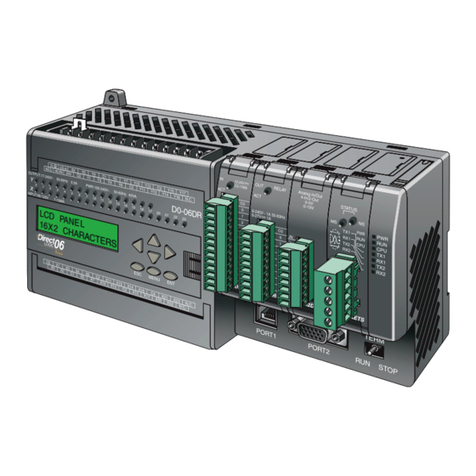
Automationdirect.com
Automationdirect.com DL06 user manual

valent
valent RyzUp SmartGrass PGR quick start guide
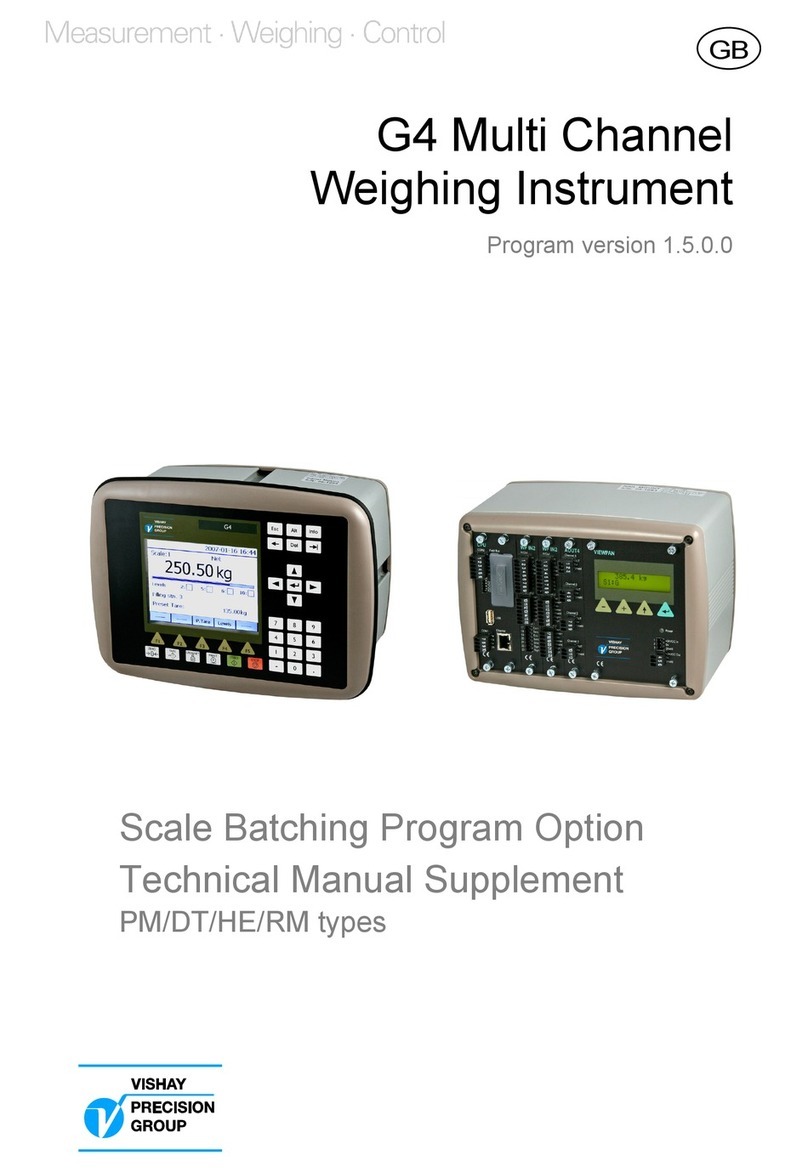
Vishay
Vishay G4 Technical manual
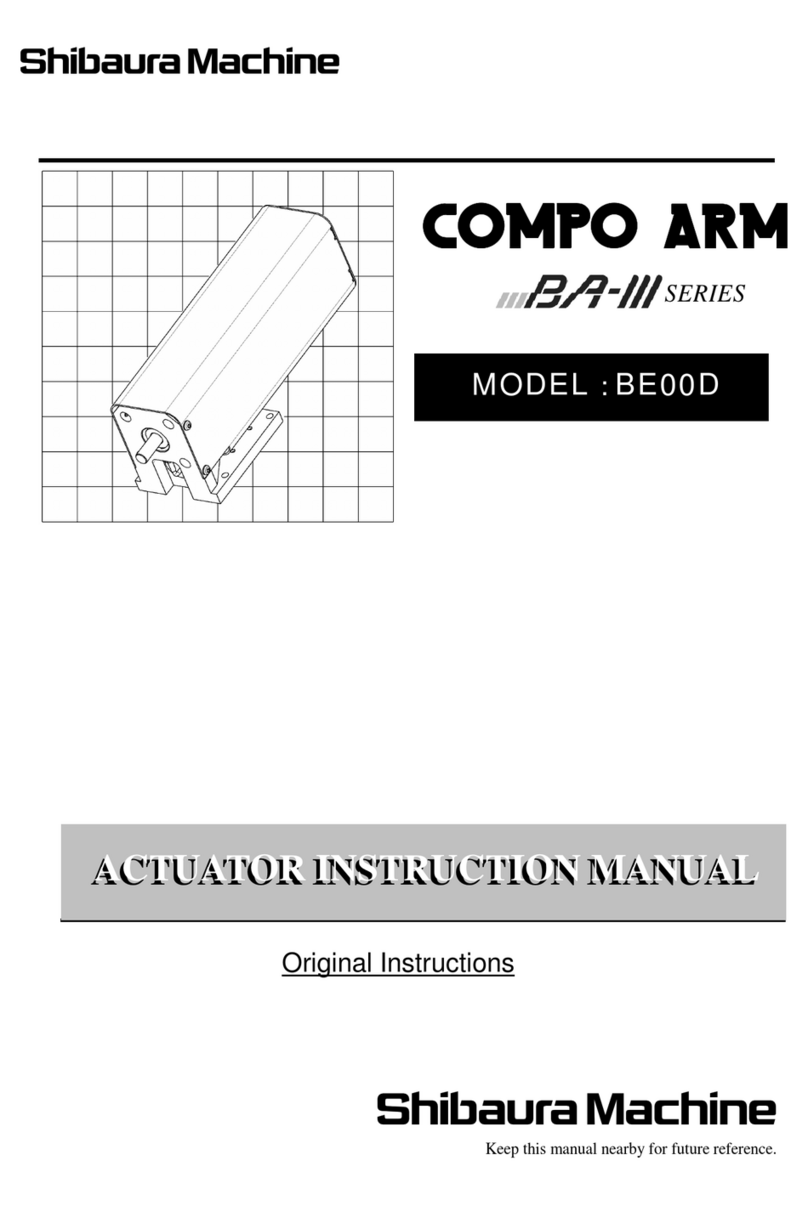
Shibaura
Shibaura BE00D instruction manual
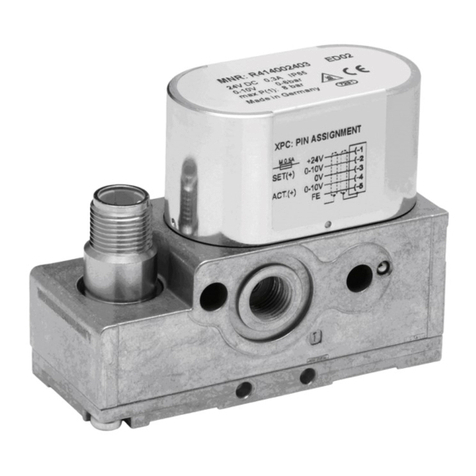
Aventics
Aventics ED02 manual
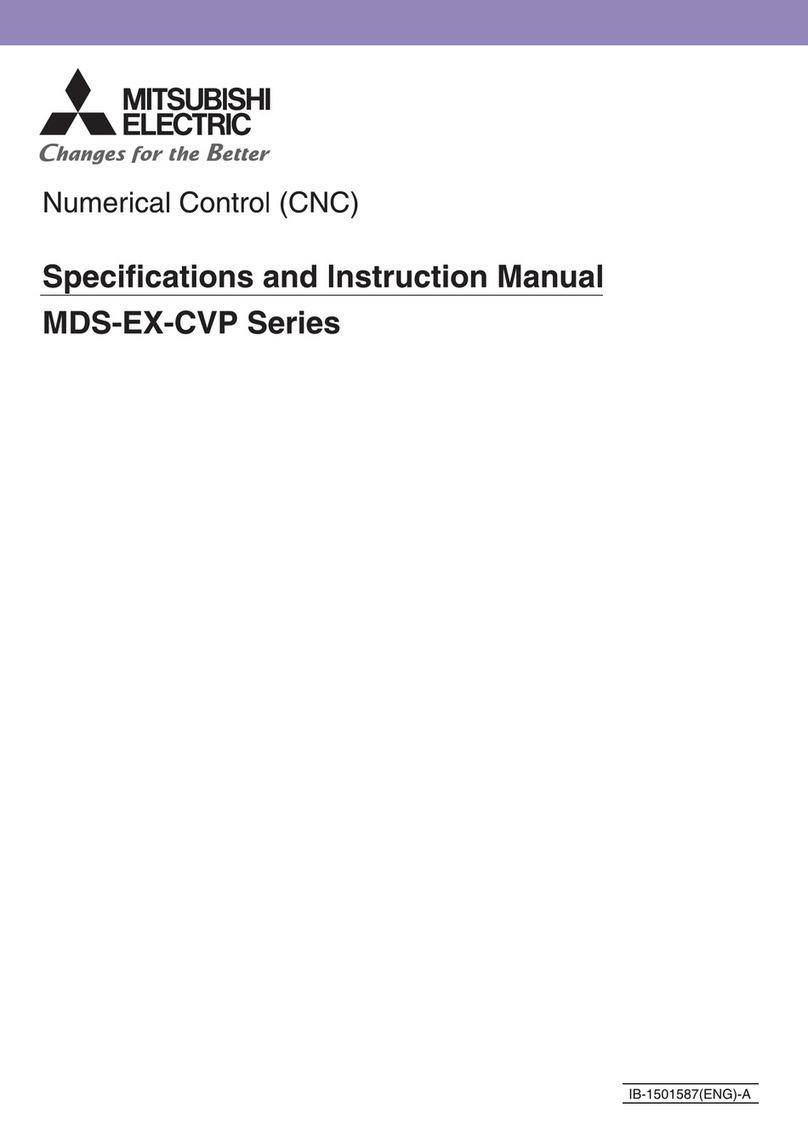
Mitsubishi Electric
Mitsubishi Electric MDS-EX-CVP Series Technical Specification and Instruction Manual
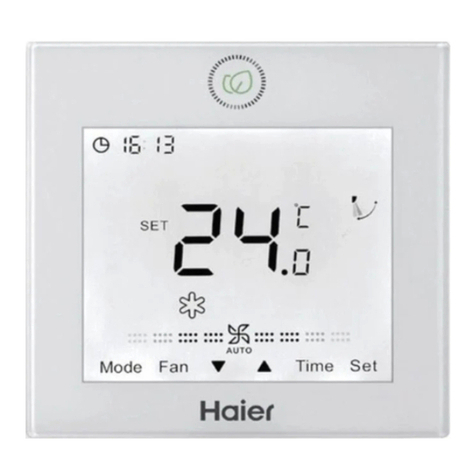
Haier
Haier RWV05 V2 Operation & installation manual
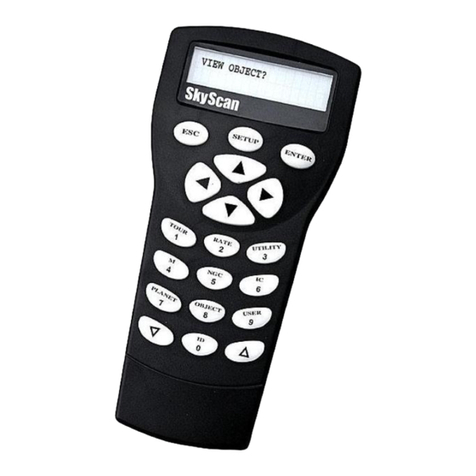
SynScan
SynScan V2 instruction manual
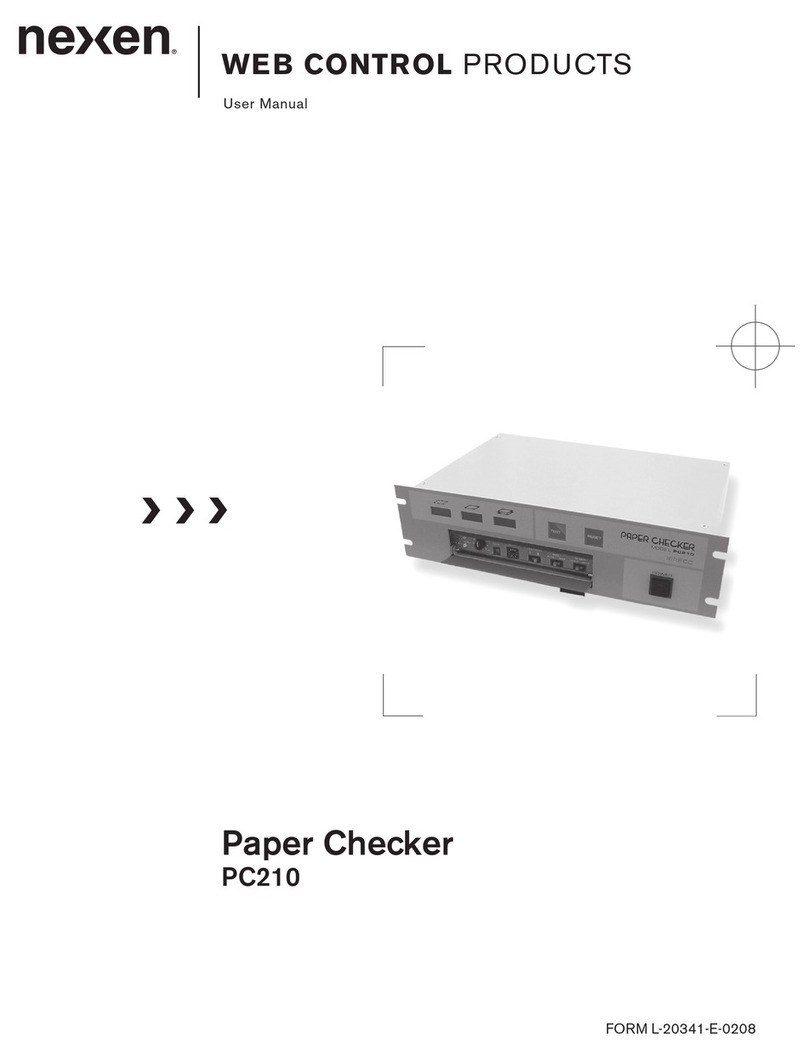
Nexen
Nexen Paper Checker PC210 User manua
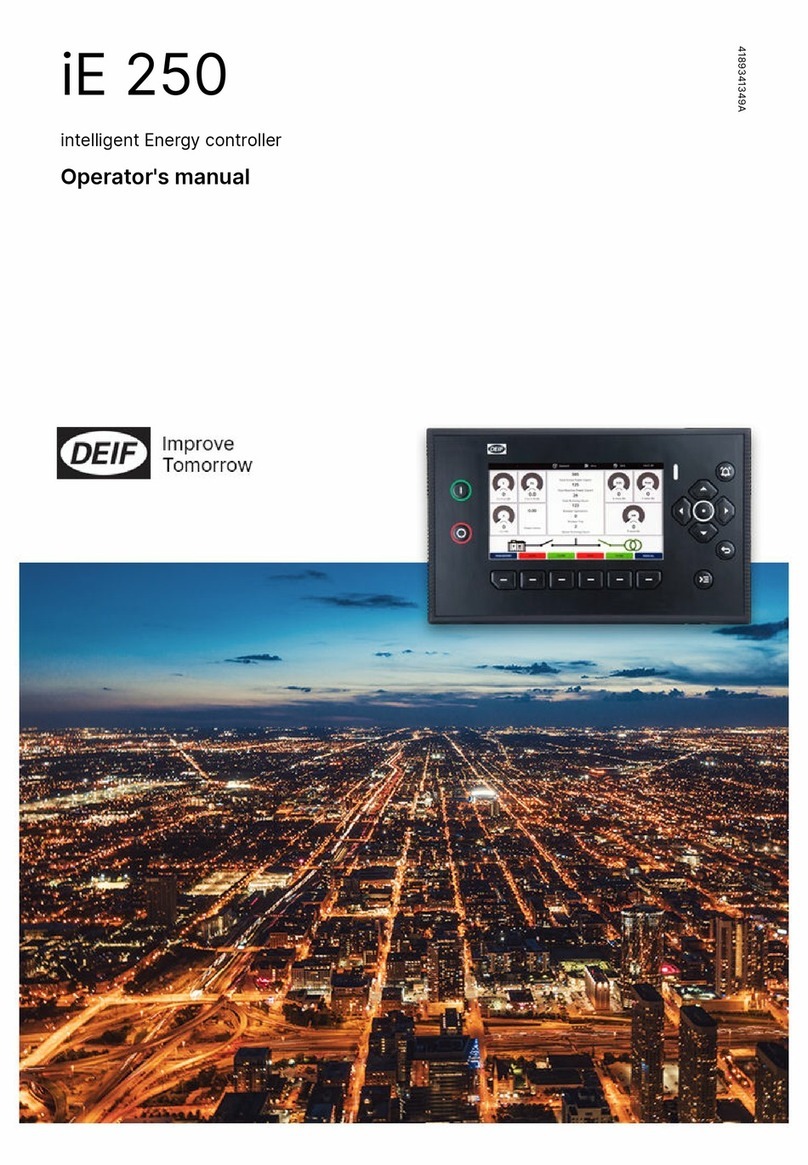
Deif
Deif iE 250 Operator's manual

Wheatstone Corporation
Wheatstone Corporation GPC-3 Studio turret Technical manual
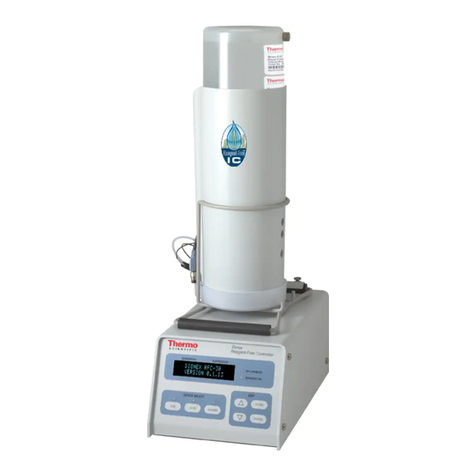
Thermo Scientific
Thermo Scientific Dionex RFC Operator's manual

